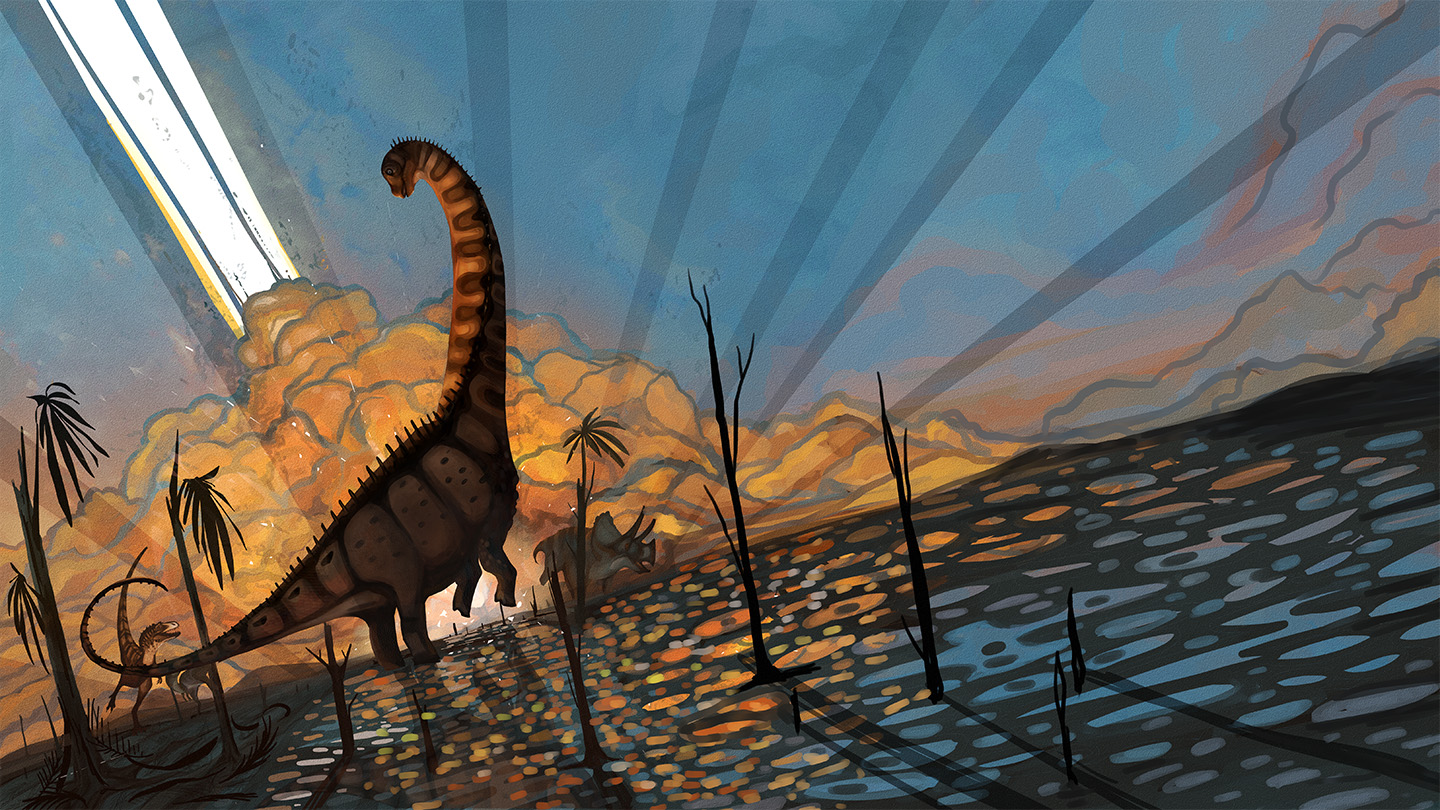A ridge of rocks in New Mexico holds a snapshot of a dinosaur heyday. Fossils of crested hadrosaurs, long-necked sauropods and a variety of plants all point to a flourishing ecosystem.
New dating of the rocks now reveals this thriving scene existed not long before an asteroid slammed into Earth 66 million years ago. The analysis bolsters evidence that dinosaurs weren’t necessarily on a slow march to extinction before the asteroid dealt the final blow, researchers report October 23 in Science.
“Without this impact, they weren’t on their way out,” says Andrew Flynn, a geologist at New Mexico State University in Las Cruces.
For decades, scientists have tried to determine whether communities of dinosaurs across the North American continent from the final few million years before asteroid impact were made up of only a small number of the same species. If true, that lack of diversity could hint that they were already on the decline before they were wiped out by the space rock.
One reason the question is difficult to answer is the lack of well-dated fossil evidence from the millennia leading up to impact. The best-known formation from this time is Hell Creek, located in today’s Dakotas, Wyoming and Montana. A rock formation in New Mexico, called Naashoibito Member, was another location where fossils showed thriving communities of dinosaurs.
By comparing the New Mexico species to those found elsewhere, earlier work had dated these rocks to be around 70 million years old, so millions of years before impact. Other studies suggested ages closer to 67 million or 66 million years old. But it was a hard spot to date precisely.
Rocks from what’s called the Cretaceous-Paleogene boundary, marking when the asteroid hit, normally include a thin layer of clay. That layer appears to be missing at the New Mexico site. So Flynn and his team instead narrowed down its geologic age using a combination of techniques.
The magnetic polarity of minerals within the rock layers showed that the Earth’s magnetic field was reversed at the time they were being formed. These flips, however, happened multiple times in the late Cretaceous Period. Dating a form of argon in certain crystals in the rock helped the team pinpoint an age: The youngest ones within the New Mexican formation were 66.38 million years old.
“It is literally the last hundreds of thousands of years of the Cretaceous,” Flynn says.
Once it was clear the formation from New Mexico had a similar geologic age to Hell Creek, paleontologists compared the two sites’ fossil records. The dominant herbivore in New Mexico was the sauropod Alamosaurus. A type of crested duck-billed hadrosaur, called lambeosaurine, was also present. In contrast, Hell Creek had hadrosaurs without crests and lacked Alamosauruses altogether. Flynn says the sauropods were likely sensitive to colder temperatures, suggesting climate played a big role in determining which animals lived where, not just geography.
These location-based differences in fauna help back up the idea that dinosaurs were part of complex, fully functioning ecosystems that could have continued longer if the asteroid hadn’t interrupted them, says paleontologist Paul Barrett of the Natural History Museum in London, who was not involved in the study. He thinks the patchy fossil record has been driving the decline debate.
“Most of our knowledge of what happens in those last few thousand years before the end of the Cretaceous comes from a relatively small area of North America that happens to have rocks of the right age and right type to capture those animals,” Barrett says.
New Mexico is a new location, but ultimately it falls into that same geographical area, so the new study still lacks that global perspective, says paleontologist Manabu Sakamoto of the University of Reading in England, who was also not involved in the study.
In 2016, Sakamoto and colleagues argued dinosaurs entered decline tens of millions of years before extinction, when new species could no longer keep up with those going extinct. He believes the new findings don’t rule out the idea, saying the debate is more nuanced. Looking at the entire tree of life of dinosaurs, he thinks their diversity eventually became a “variation of the same theme.”
In other words, a dinosaur in the group that includes Triceratops might go extinct, but it would be replaced by something similar, Sakamoto says. “It’s not replaced by some new species of another dinosaur that does something totally different.”
Decline or not, scientists agree the asteroid brought environmental changes that non-avian dinosaurs, unlike mammals, couldn’t cope with. “Although it’s something that happened a long time ago, there are still potentially lessons to be learned about how different groups of animals and plants respond to major environmental perturbation,” Barrett says.




